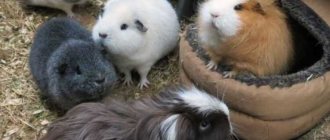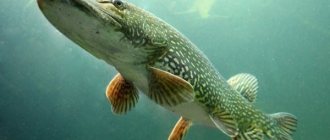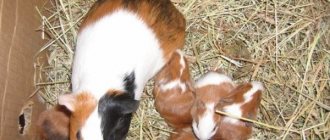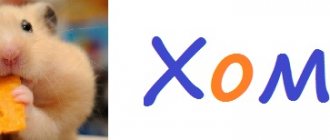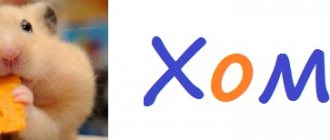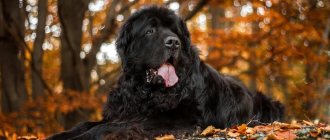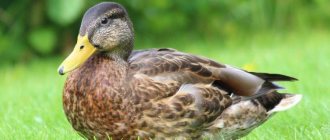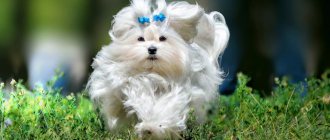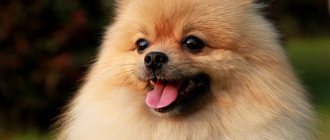- home
- Guinea pig
- Guinea pig breeds
02/14/2019 Among the breeds of guinea pigs, smooth-haired varieties are the most popular. This is due to the simple care of such animals, which even children can do. The common breeds of rodents belonging to the smooth-haired species, as well as the peculiarities of keeping these pets, will be discussed below.
general description
The body of an adult pet is round, stocky, no more than thirty centimeters. There are four fingers on the forelimbs, and only three on the hind limbs. The shoulders are wide, the head is heavy and large. The ears are located at a great distance from each other, the nose is hooked and very thick, bulging eyes are black. The weight of the animal is about 1000 grams. The coat is shiny, consisting of silky hairs, fits tightly to the body, its length is no more than three centimeters, which is considered a distinctive feature. The fur is directed in one direction over the entire surface and creates a semblance of a glossy cover. Some rodents have rosettes on the back of their necks. Color - three-, two- or one-color.
Origin of the animal
The domestication of rodents occurred in South America by the Incas and Indians. In the 16th century, the conquerors of America noticed the similarity of the animal with pigs, and brought the strange living toy to its homeland in Europe. So the name appeared - overseas pig, which was simply shortened to sea pig.
This has a good side for the animal - they were raised in their homeland for food, by the way, this is still practiced to this day, but in our country it is an exclusively ornamental animal.
Characteristics of a guinea pig
- Body length – up to 30 cm;
- Weight – up to 1 kg;
- Color – brown, white, red, black and their combinations;
- The body is round in shape, slightly plump;
- The nose is hump-shaped, cold and wet;
- Teeth – no fangs, 4 incisors (2 below and 2 above), grow throughout life, have no roots;
- Lifestyle – they can stay awake both day and night, there is no strict regime;
- Life expectancy is up to 8 years.
In groups, males show leadership qualities.
Breeds of smooth-haired guinea pigs
Scientists have managed to breed several interesting breeds of these animals, which have some characteristics:
- American Teddy - rodents look very similar to teddy bears, which is why they were given this name. They are quite large, but their physique is proportional. The head and nose are round in shape, the ears are hanging. The wool is thick.
- Rex are powerful and muscular rodents. A distinctive feature is drooping ears. Short and curly hair stands on end. Color, combining several shades or having one, creates a unique color.
- Satin - smooth-haired guinea pig has a slightly elongated muzzle, ears pressed to the head. Their color, like that of the paw pads, is the same as the general color. It comes in all shades of red, and there are also black and white versions. The wool, due to its special structure, is shiny. The hairs are hollow inside. This breed has several subspecies - tortoiseshell, spotted and agouti.
- Self are very large individuals. They have a glossy and straight coat. Its peculiarity is its monochromatic color (red, brown, black, beige, red-orange), the absence of curls and rosettes. The pads of the paws and the color of the ears are golden or pale pink. Eyes red or black.
- Crested - body length reaches 35 cm, and body weight reaches one and a half kilograms. The peculiarity of this breed is the presence of a flat rosette on the head. There are two subspecies - American, which always has a white rosette, regardless of the color of the coat as a whole, and English, which has a rosette of the same color as the color of the animal. The shades are quite varied; there are smooth-haired guinea pigs - black, smoky, golden, white or two-colored.
Where and how to buy a guinea pig
As a rule, show and breeding class animals are the most expensive, since they are the ones who participate in exhibition shows and are the basis of any nursery or breeder. Pet-class pets are inexpensive and accessible to citizens of any category.
The cost of animals includes various factors, such as gender, quality, color, and origin. Imported animals cost at least 15 thousand rubles, since transportation is not cheap at all. Regardless of origin, the pig must be absolutely healthy, well-fed and very active. The eyes and nose should be clean, and the coat should be well-groomed, without scratches or bald spots.
Features of reproduction
At home, rodents mate all year round. However, young individuals obtained from large females in the summer are the healthiest. It is advisable for inexperienced owners of these pets to create only one opposite-sex pair. The male looks after his mate very tenderly, and if they become friends, they will be together all their lives, taking care of each other. There is also another situation when a female does not allow a male to approach her even during estrus, because she does not feel sympathy for him.
Puberty occurs in females at four, and in the opposite sex at ten weeks. Veterinarians recommend mating adults. It is advisable to breed a female guinea pig at ten to twelve months. Mating up to twice a year is considered harmless to her health. More frequent mating negatively affects her condition and contributes to:
- late toxicosis and death;
- spontaneous miscarriages;
- the birth of weak and non-viable offspring;
- premature birth.
When pregnancy occurs, the male should be removed so that the female can carry, feed the baby, and recover herself. Remember that a female after giving birth can become pregnant within 24 hours. Breeding rodents at home is favorable if there is an optimal climate and a balanced diet.
Families with children
The guinea pig gets along well with small children. If you don’t openly torture her, then the pig will be happy to let small children play with her.
Guinea pig and girl baby
Love the animal, take care of it, and it will respond in kind, and everyone will be happy, as in the photo above. This is a kind, peace-loving animal.
And remember - we are responsible for those we have tamed!
Cell
Smooth-haired guinea pigs do not require special care, but they need their own cage, which has an area for eating, resting, playing, and also a toilet. The best design for these purposes is a design with a plastic tray into which a special filler is poured, and dimensions per individual - 80 x 90 cm and a height of about 35-50 cm. Bedding, two feeders, a tray, a drinking bowl, and toys are placed in the cage , stones for sharpening claws, shelves, ladders, and also hay. Pigs feel good at temperatures from 18 to 20 degrees.
Every day you need to remove leftover food and wash the feeder. The litter is changed at least twice a week. All surfaces of objects and the cage itself are treated monthly.
How to find out the breed
When purchasing an animal at a pet store or online, you need to know how to determine the breed of guinea pig. This is necessary so as not to buy the most ordinary animal under the guise of a rare cavy with an unusual color. You can learn about the breeds on numerous sites and forums of pig breeders, where detailed descriptions of the animals with photographs are given. You can also contact clubs for explanations of the characteristics of a particular Kavy breed.
Skinny guinea pig breed
Baldwin breed of hairless pigs
Breeders are willing to share information. However, some breeds of animals are recognizable: Teddy has plush fur and looks more like a toy, Skinny has no hair at all, and Alpacas have funny curls. Which breed is best to choose in the end depends on capabilities and personal preferences.
Nutrition
The diet of these rodents must include wheat bran, fresh, slightly dried greens, and cereal porridge. In winter, various special vitamin and mineral supplements, fruits, vegetables and dry herbs are added. They are given small wooden blocks or tree branches to grind down their teeth. It is allowed to periodically feed them with ascorbic acid, chalk and bone meal. They drink little liquid, but they need fresh water. Pigs are fed no more than twice a day. Special cereal sticks with honey can be given twice a week as a treat.
Smooth-haired guinea pigs should absolutely not be given any dairy products, eggs, meat, fish, spicy vegetables and cabbage, as well as smoked and fried ready-made meals. A balanced menu will allow your beloved pet to be healthy.
Rare breeds
In addition to the ordinary guinea pigs that are familiar to most people, there are breeds with a non-standard appearance that look very exotic and original.
Kui
These are real giants in the kingdom of guinea pigs. Adult pigs can reach a length of up to 50 centimeters, and the largest pigs weigh from 1.5 to 4 kilograms.
In their homeland, Peru, these animals serve as a source of meat, where they are raised on special farms. And although some hobbyists keep furry giants as pets, cooi are not the best pets, as they are quite aggressive and often bite their owners. In addition, the lifespan of kui is much shorter than their smaller cousins, and on average they live no more than 3 years.
Swiss Teddy
These rodents are considered the fluffiest among their short-haired counterparts. The main feature of Swiss Teddies is their “crimped” wool. Fluffy and curly animals look like a soft fur ball, and some owners compare their pets to dandelions.
Ridgeback
Very interesting representatives of short-haired pigs, which have a woolen comb along their spine, giving the rodents a somewhat aggressive and angry appearance.
At the moment, Ridgebacks remain a small and rare group of guinea pigs that have not received official registration as a separate breed.
Himalayan
Animals of the Himalayan breed have a specific and original appearance. In fact, they are albinos, who have pigmentation in certain areas of the body, in this case black or dark gray.
The animals' fur is completely white, and the ears, tips of the paws and the area around the nose are painted in a dark shade.
Like Ridgebacks, Himalayans are not yet recognized as a separate breed, and breeding work to consolidate their standards is still underway.
Tortoiseshell with white (cakes)
A rare and very valuable guinea pig among breeders, on whose body black, red and white spots alternate in a certain way.
Unlike ordinary tri-colored “turtles,” the tortoiseshell-and-white breed has an interesting checkerboard-like pattern on its back, formed by even colored squares. Because of this three-layer effect, the animals are affectionately called “cakes.”
Lunkaria
A relatively new breed that has not yet become widespread. Lunkaria have a long luxurious coat, and each strand is curled into a tight, slightly harsh curl. And, if in other curly pigs the hair straightens out when combed and becomes simply fluffy, in lunkarias after such a procedure the strands curl up again into a tight curl.
Curley
These beautiful animals are similar to curly lunkarias, as they also have tight, coarse curls. The only difference between them is that the Curlie has shorter hair. Thoroughbred individuals have dense curly fur, the fur on the belly is also curled, and there are always whiskers on the cheeks.
Mini-yak
One of the recently bred and rarest breeds. These delightful animals combine the features of three breeds: the long hair of the Peruvians, the rosettes characteristic of the Abyssinian pigs and the hard, slightly curly fur of the Rex.
The mini-yak has long strands of hair sticking out in different directions due to the vortices that are formed, and the bangs fall over the eyes or to the side, so the rodent looks a bit like a disheveled parrot.
Somalia
A new and very rare breed that is just waiting for official recognition. Somalis look like Abyssinians, as they have rosettes on their bodies, but the structure of their coat resembles the curly fur of the Royal Rex.
All types of guinea pigs are so different, but they have one thing in common: they are extremely trusting, affectionate and gentle pets
And it doesn’t matter at all what length or structure the fur of a cute rodent is, because in any case, the little animal needs love, care and attention
Water treatments
They are necessary in rare cases when the pig is very dirty. The rest of the time she cleans her fur on her own. For water procedures you need to prepare:
- small terry towel;
- special shampoo;
- container with anti-slip coating.
The water temperature should not exceed 38 degrees. During this manipulation, you must carefully ensure that water does not get into the animal’s ears. After completing the bath, he is wrapped in a towel.
Skinny
These pigs of truly exotic appearance appeared as a result of a mutation in 1978 at the Institute of Montreal (Canada). They have no fur, only on the nose and paws there are sparse curly and coarse hairs. Skinny skin is very soft and velvety. The most common color is chocolate; there are black, tortoiseshell, silver, lilac, etc.
Skinnies have an excellent appetite, which is not surprising: they have a faster metabolism, as they need to retain body heat. Therefore, they eat 3 times more than their furry counterparts, sometimes gnawing on something all day long.
Due to their lack of fur, skinnies require a little more care and attention than regular guinea pigs. The main thing that future owners of these cute and gentle creatures need to know is that skinnies need to be protected from drafts and always kept warm. If fasting days are only beneficial for most animals, then for skinnies to remain for two days without food is literally like death. At the same time, skinnies are prone to obesity, so the owner’s task is to carefully consider the diet, establish a diet and strictly adhere to it.
Baldwins
Unlike Skinnies, who have tufts of hair on their paws and nose, Baldwins are a completely hairless breed. Babies are born covered with fur, like ordinary pigs, but by the age of one month it completely falls out. Baldwins have extremely delicate skin; both cold and direct sunlight are dangerous for it.
A person who has decided to get a guinea pig and has become acquainted with all the variety of breeds faces a difficult question: how to choose “your breed” among all this diversity?
Surely, many people want to have a rare breed of pig at home. Thus, hairless guinea pigs are very in demand and popular today. But here you need to take into account that these are more delicate and sensitive animals, they are more demanding in terms of care and living conditions. And the price for such exotics will be significantly higher than for pigs of less rare breeds. In addition, when purchasing a pig of a rare breed with a good pedigree, additional responsibility is imposed on the owner: you need to join a club, take part in exhibitions, find your pet the most suitable partner for mating, etc.
Pigs of less rare breeds can be no less beautiful and affectionate pets. Short-haired guinea pigs are easier to care for, they have high immunity, which means they get sick much less often than other breeds of pigs. Animals with short hair are the best choice for a novice breeder. In addition, if you are purchasing a guinea pig for a child, it is best to choose just such a pet. Caring for rosette pigs is also not very difficult, but they are somewhat more expensive. As for guinea pigs of long-haired breeds, they need more thorough coat care, which will require much more time.
Cleaning ears and eyes
This is an important step in caring for a smooth-haired guinea pig. Clean them regularly using a regular cotton swab, which must be moistened in an aqueous solution of Chlorhexidine. If there are crusts in the ears, a special “Bars” solution is instilled into them. If the animal squeals when performing this manipulation, then it is advisable to visit a veterinarian, since the cause of this behavior may be ear mites.
Crusts periodically form in the corners of the eyes; they can be easily removed with a cotton pad moistened with warm water or tea leaves. If you notice redness or watery eyes, then most likely a foreign body has entered the eye. In such cases, the help of a veterinarian is required.
Buying an animal
Before buying a guinea pig, you need to prepare a home for it. The cage should not be small, at least 50 square cm for each animal.
Cage without a roof
The bottom must be lined with a mixture of sawdust and wood filler, food must be placed only in a bowl, and there are different bowls for different foods, and a sippy cup with fresh water is a must. So that the animal does not get bored and has somewhere to hide, it is advisable to equip the cage with ladders, ropes, labyrinths, houses and caves. Whatever you have enough imagination and space for.
Cub choice
You can buy it either at the nearest pet store or at a nursery from professional breeders. The second option is more preferable:
- Guaranteed proper care for babies and their parents;
- They will show you the baby’s parents and tell you about the habits that are passed on to their offspring;
- They will explain about care, what can and cannot be done, and answer all questions;
- They will write a pedigree.
Grown-up guinea pig babies
The choice of a baby must comply with the rules:
- Age - at least 1 month, from now on they do not need breast milk;
- Healthy appearance - shiny coat, bright clear eyes, clean nose and ears;
- The pig should be active, nimble, and well-fed.
- Find out what kind of food she was introduced to, and switch to your food gradually, over the course of a week. Don't forget to change the water daily.
Their price is low, up to 4000 rubles.
Skin care and manicure
The smooth-haired guinea pig, a photo of which is in the article, requires brushing its coat every three to four days. A brush with soft natural bristles is suitable for these purposes. With this simple procedure, dead hair is removed and new hair growth is activated. Brushing is a pleasure for your pet.
Long claws cause a lot of trouble, as they cause bacterial infections and problems with the musculoskeletal system. They are cut with a special tool once every six months. This must be done very carefully so as not to damage the vessels and nerves that are located at the base of the claw.
Keeping smooth-haired guinea pigs at home
Smooth-haired guinea pigs do not require special conditions for comfort. They need all the same accessories for life as most pigs. Of course, like any small pet, a pig needs a cage.
The cell arrangement is standard. The pig needs a place to rest, a “dining room”, a “restroom” and a play area.
Cell
For smooth-haired pets, choose a cage with a plastic tray. The minimum dimensions for one pet are 80*90 cm, height 35 cm.
The cage contains:
- A reserve for hay, where the animal can feed itself with dry grass and also build a nest for itself;
- feeder;
- sippy cup;
- tray;
- house;
- toys;
- litter
The cage must be installed on a straight surface without tilting. It is important to avoid direct sunlight and drafts when choosing a location for the cage. Before putting hay in the cage, you need to knead it well with your hands. Experienced breeders use soft dried timothy grass.
Caring for the animal and cleaning the cage
To keep your animal clean, you will need to carry out the following procedures:
- Combing out fur;
- trimming claws;
- water procedures;
- ear treatment;
- home cleaning.
The fur should be brushed daily. This procedure will remove dead hair and stimulate the growth of new fur. This activity will bring your pet a lot of pleasure, because the brush massages the skin. It is better to choose a brush with natural soft bristles.
A rodent needs a manicure just like its owner. Uncut legs grow, curl and become the cause of musculoskeletal problems, as well as bacterial diseases. To keep the animal clean and healthy, it is necessary to trim its claws once every 2-4 weeks with a special nail clipper or electric file. These tools are sold at pet stores. When trimming, you need to be extremely careful so as not to touch the nerve and vessel located at the base of the claw. To perform the procedure correctly and safely, it is recommended to consult a veterinarian or study the relevant materials on caring for pigs.
Water procedures are not so necessary. The pig cleans its own fur. But there are times when a pet is so dirty that a bath is indispensable. For swimming you will need:
- bath with anti-slip mat;
- water with a temperature of 24 degrees;
- special shampoo;
- terry towel.
It is important to ensure that water does not get into your pet's ears. Immediately after bathing, the pig should be wrapped in a towel, as these animals are susceptible to colds.
Minor stains and daily wet care can be carried out using special wet wipes.
Cleaning the ears is a very important step in caring for your pet. You need to clean your ears regularly with a stick soaked in chlorhexidine. If there are dried crusts in the ears, then the Bars solution is instilled into the ears. It is sold in pet pharmacies. And if your pet squeals when trying to clean its ears, then you need to take it to the veterinarian. Perhaps an ear mite has settled in your pet's ear canals.
Cleaning the cage consists of daily washing the feeder and disposing of leftover food. The litter needs to be changed twice a week. General cleaning, which includes treating all surfaces of the cage and objects, is carried out once a month.
Pigs are colorful
Smooth-haired tri-colored guinea pigs have soft, smooth, silky hair, without curls or rosettes. They are characterized by a bright, unusual pattern. The colors, and there are three of them in any shade, with the exception of white, black and bright red, are distributed in the form of a chessboard consisting of squares of the same size. The best specimens have two colors on the head and three or more patches of all colors on each side. In animals, the so-called dividing line is clearly visible, which is formed at the junction of areas located on the sides and runs along the entire body, both below and above. There is no specific color sequence, but purity of color is important. There should be no admixture of hairs of other shades. They have a short and wide head, eyes located far apart, clear and protruding, large ears hanging down.
Abyssinian (rosette) guinea pigs
The Abyssinian breed is one of the most popular. Abyssinians first appeared in England in 1861 as a result of a mutation in the coat gene, and in 1866 the first individuals were brought to Europe.
A characteristic feature of the Abyssinian breed is a special growth of hair, which is why rosettes are formed (the hair in the rosettes diverges from the center to the periphery). Rosettes must be of the correct shape and have clear boundaries. The total number of sockets is 8-10, maximum 12. The standard specifies their location: 2 on the nose, 1-2 on the shoulders, 4 on the sides and 4 on the back of the body. In addition, they must be symmetrical. In some individuals, as a result of mutation, the number of rosettes can reach 30 pieces - these are no longer considered purebred. The rosettes located nearby form tufts, or ridges. Any colors are possible. The fur reaches 3-4 cm in length; in females it is softer than in males. The body of Abyssinian pigs is strong, muscular, and moderately long. The shoulders and chest are wide, the back is straight, the back is rounded. The legs are straight and short. The head is short, rounded, with large ears, large shiny eyes and a slightly elongated nose (this is called a Roman nose).
Wirehaired
Representatives of wire-haired rodents are classified as a special species due to the harsh structure of their coat. The fur of such guinea pigs is not smooth and soft, but rather rough and bristling in different directions.
Abyssinian
One of the oldest breeds of guinea pigs, which are considered unique and one of a kind. After all, Abyssinians have one distinctive feature: their entire body (except for the tummy) is covered with peculiar funnels or, as they are also called, rosettes. The sockets are arranged symmetrically, and their number ranges from 8-10 pieces.
There are also Abyssinians with “double rosettes,” when instead of one funnel, two small ones are formed. Animals whose entire body is covered with small rosettes have a very unusual and original appearance.
American Teddy
Another representative of wire-haired pigs, the American Teddy, also looks interesting. The animals have short, curly fur that stands on end, making them look like little teddy bears.
These rodents are also considered one of the largest guinea pigs, because on average the weight of adult individuals is 1-1.2 kilograms.
Rex (royal)
Short-haired rexes have a hard, thick and dense coat. Short, slightly curly hairs stick out in all directions and give the animals a resemblance to prickly hedgehogs.
By the way, of all the breeds of guinea pigs, rexes are the smartest, they are quickly tamed, amenable to training and are able to perform funny tricks on command.
